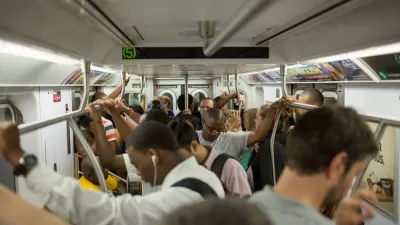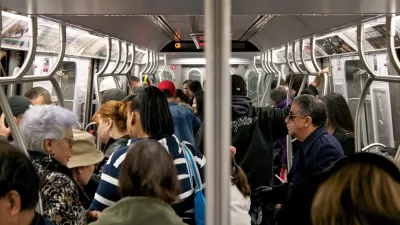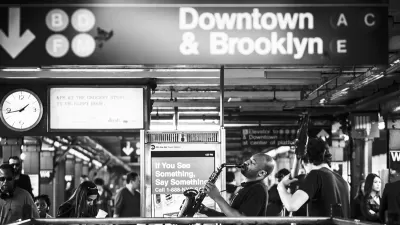The Atlantic has deep and detailed coverage of the expensive, obsolete, and decaying technology used by the New York subway system.
An incisive long read by James Somers details the missing links in the user experience of New York's subway system: countdown clocks and other mechanisms by which people can anticipate the arrival of trains. Somers starts the story with an anecdote about the Carroll Street station in Brooklyn, where transit riders stand outside the station to watch for the train's arrival—it's the only method of reconnaissance available:
"The only people who know exactly where that train is are on the train itself. The signal-tower operators don’t know; there’s no one in the Rail Control Center who could tell you, because the F isn’t hooked up to the Rail Control Center. Today, for the F train—along with the G, the A, B, C, D, E, J, M, N, Q, R, and Z—the best the system can say is that the train will get there when it gets there."
Any transit user can assess to the benefits of having reliable, real-time information about the arrival of their ride. Somers states it plainly that it shouldn’t be so difficult:
"It is easy to take for granted that governments move slowly, particularly on large infrastructure projects, particularly when those projects involve software. But we live in a world with cars that can drive themselves. Trains are huge objects that move in one dimension. How could it cost hundreds of millions of dollars and take nearly a decade just to figure out where they are and report that information to the public? Really: How?"
Somers proceeds to take a deep dive into the mechanics of the subway system a complex "of towers, signals, switches, and track sections" that is also "responsible for a disproportionate share of the costs and foibles in the operation and maintenance of New York’s subway system." The answer to all of these threats and malfunctions, according to the article is communications-based train control (CBTC). An MTA video, shown below, admits its faults in much the same way as detailed by Somers, in an effort to drum up support for CBTC.
As a counterpoint to the discussion about the current obsolescence of the system, Somers describes how a system using CBTC would work. Then this sobering statistic: "At the current pace of installation, the subway system as a whole won’t be converted to CBTC for another 175 years. It will cost $20 billion."
The story has a lot more on the many difficulties of upgrading the subway system, or as Somers puts it, "the story of a large organization’s first encounter with a large software project."
FULL STORY: Why New York Subway Lines Are Missing Countdown Clocks

Planetizen Federal Action Tracker
A weekly monitor of how Trump’s orders and actions are impacting planners and planning in America.

San Francisco's School District Spent $105M To Build Affordable Housing for Teachers — And That's Just the Beginning
SFUSD joins a growing list of school districts using their land holdings to address housing affordability challenges faced by their own employees.

Vehicle-related Deaths Drop 29% in Richmond, VA
The seventh year of the city's Vision Zero strategy also cut the number of people killed in alcohol-related crashes by half.

Downtown Portland Ready for Maine's Tallest Building
The city of Portland anticipates a major new urban development addition called the “Old Port Square” project.

The EV “Charging Divide” Plaguing Rural America
With “the deck stacked” against rural areas, will the great electric American road trip ever be a reality?

Judge Halts Brooklyn Bike Lane Removal
Lawyers must prove the city was not acting “arbitrarily, capriciously, and illegally” in ordering the hasty removal.
Urban Design for Planners 1: Software Tools
This six-course series explores essential urban design concepts using open source software and equips planners with the tools they need to participate fully in the urban design process.
Planning for Universal Design
Learn the tools for implementing Universal Design in planning regulations.
Borough of Carlisle
Smith Gee Studio
City of Camden Redevelopment Agency
City of Astoria
Transportation Research & Education Center (TREC) at Portland State University
City of Camden Redevelopment Agency
Municipality of Princeton (NJ)





























